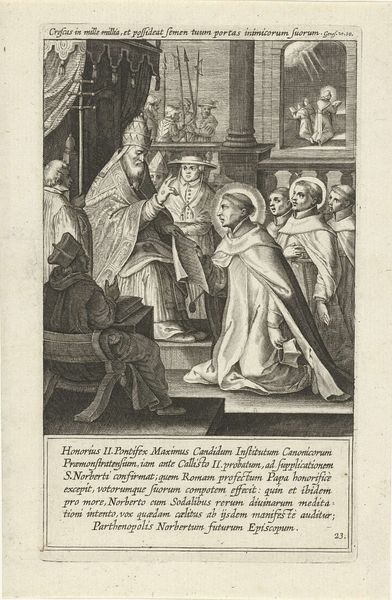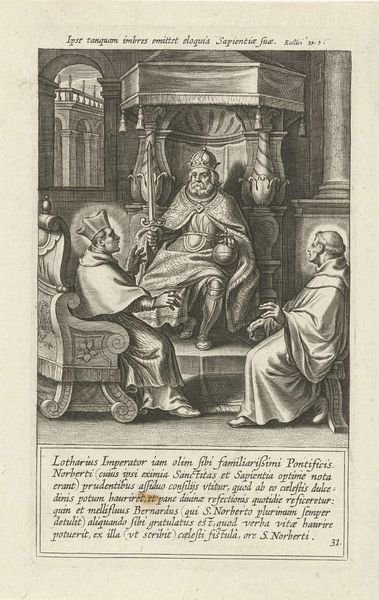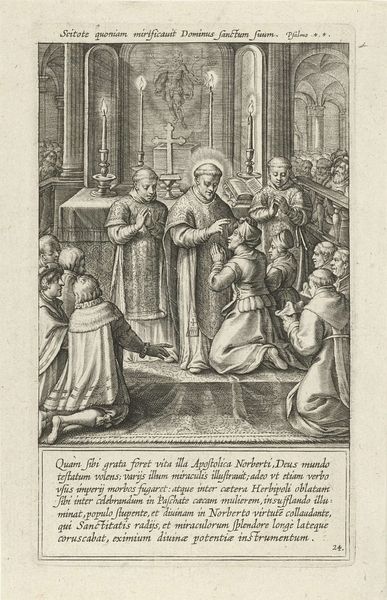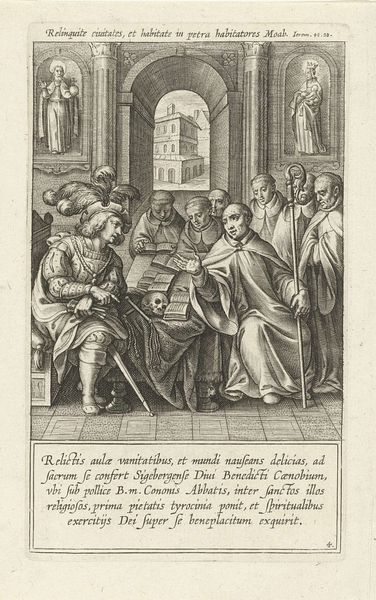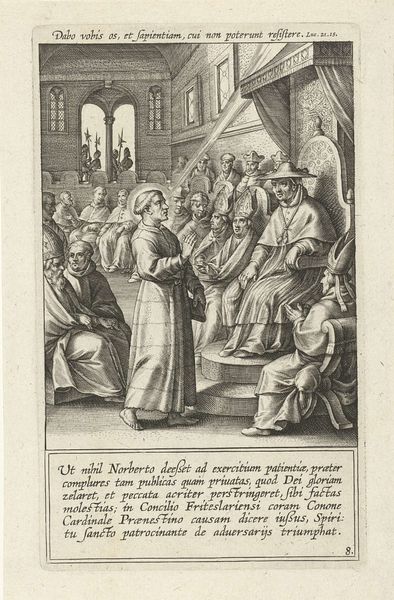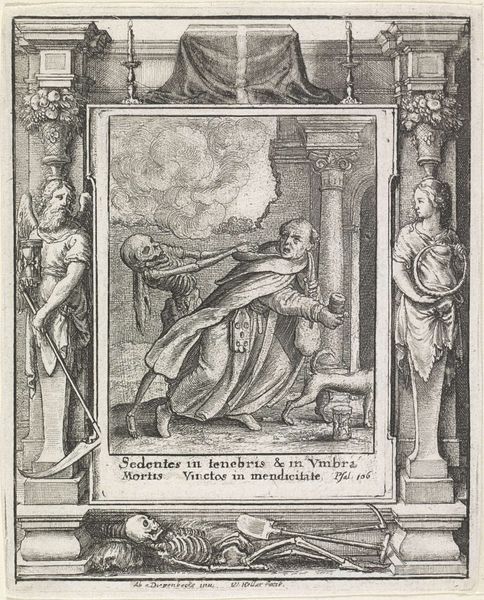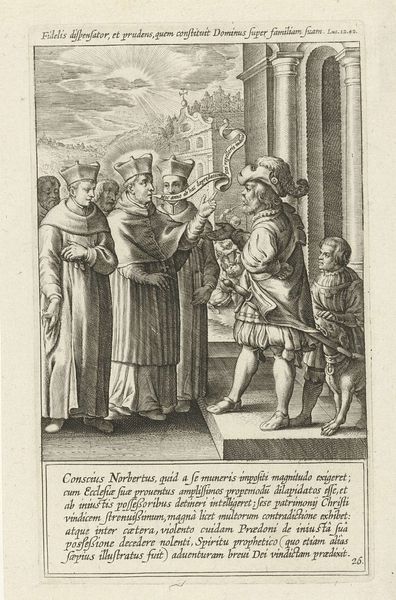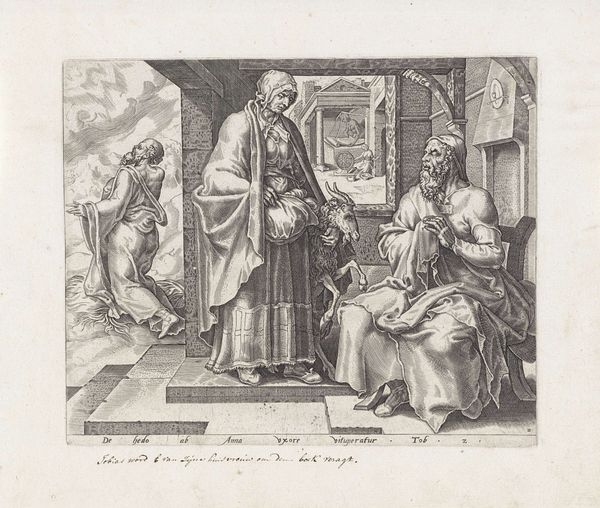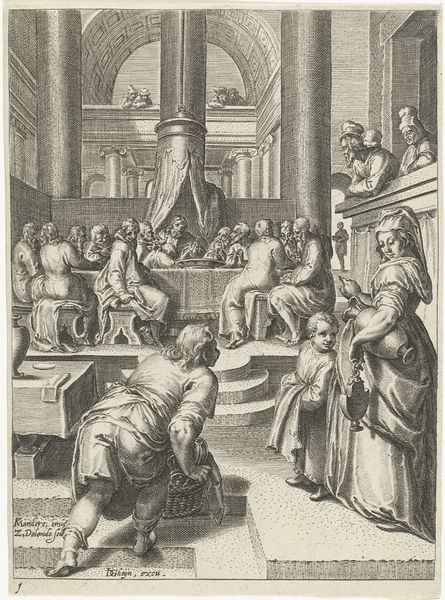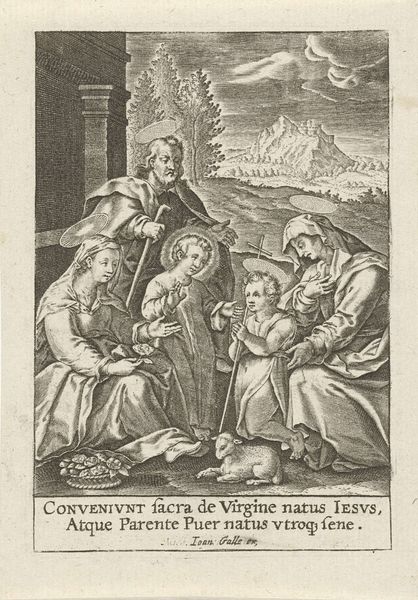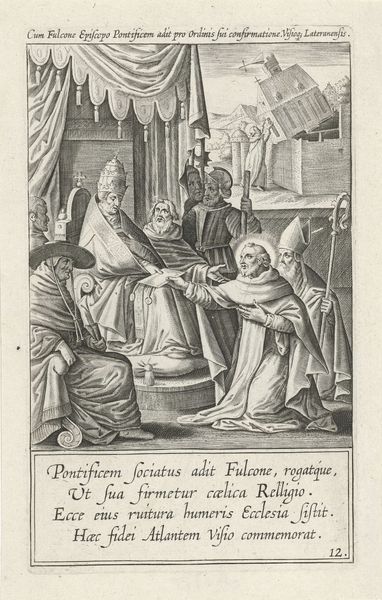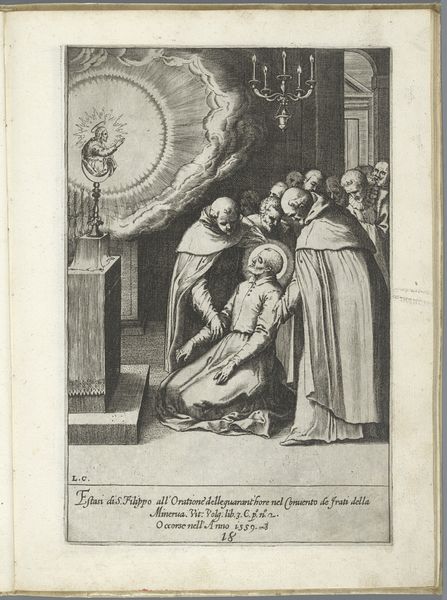
print, engraving
#
portrait
#
baroque
# print
#
old engraving style
#
figuration
#
chiaroscuro
#
line
#
history-painting
#
engraving
Dimensions: height 155 mm, width 93 mm
Copyright: Rijks Museum: Open Domain
Curator: I'm struck by the tension in this early baroque print. The scene is so meticulously rendered; you can almost feel the weight of the historical moment. Editor: Absolutely, there's a real dramatic presence. All those hatched lines create a striking contrast with the softness of Norbertus’ face. But let's orient listeners. What are we actually looking at? Curator: Of course. This engraving, titled “Moordaanslag op de heilige Norbertus wordt verijdeld”—which translates to "The attempted murder of Saint Norbert is thwarted"—was created in 1622 by Cornelis Galle I. It's currently held at the Rijksmuseum. Editor: Before diving into the art historical reading, my immediate take is how the artist is clearly reveling in this dramatic chiaroscuro. The figures are strongly lit, drawing my attention right to Norbertus and the would-be assassins. You get a strong sense of his power and the threat he faces. I’d love to know how these prints circulated, and what purpose they fulfilled at the time they were produced and disseminated. Curator: Well, if we consider the historical context, this work is a powerful piece of Catholic propaganda. The artist uses a historical narrative, which suggests the saint's power to expose anti-Catholic conspiracies and attempts on the church, particularly amidst the backdrop of the Reformation. Editor: The detail! I mean, look at the different textures achieved solely through line work: the robes, the faces, the furniture. You almost forget you’re dealing with an image made solely through repetitive, linear actions. What about this circulation? Was the labor involved commensurate with its reception? Curator: Indeed. The circulation of these prints would have reinforced the Catholic narrative. Prints were used to teach about Catholic figures and communicate hagiographic concepts across different audiences. The work served to unify Catholic identity amidst sectarianism. Editor: It’s incredible how much narrative and theological content is packed into such a materially simple medium. Cornelis Galle I. really wrung the most impact out of ink on paper. For me, the strength lies in how the material speaks to the political forces behind its creation. Curator: Exactly, this image becomes an example of art deeply embedded within a historical narrative, a story told with moral and ideological weight. Looking closely allows us to trace not just Galle's technical skill, but also his role within a fraught chapter in European history. Editor: Well said. Examining the tangible elements of printmaking has illuminated this moment and underscores how even seemingly simple artworks can become potent agents of cultural narratives and belief systems.
Comments
No comments
Be the first to comment and join the conversation on the ultimate creative platform.
